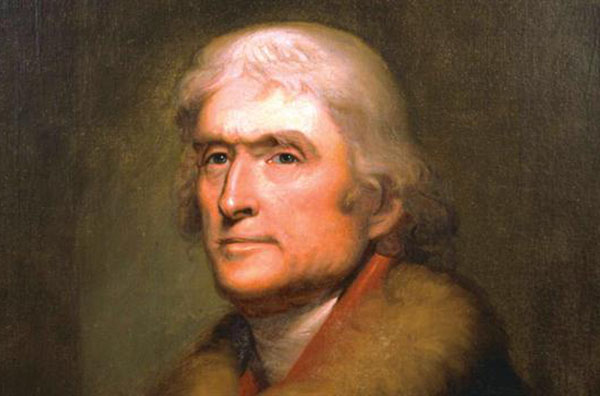The “Revolution of 1800” marked the first time in U.S. history that a faction in power voluntarily stepped down after losing a popular election.
The 1800 presidential election pitted incumbent President John Adams against incumbent Vice President Thomas Jefferson. Adams belonged to the Federalist faction (official parties had not yet been established), which favored manufacturing, friendly relations with Britain, and a strong central government. Jefferson belonged to the Democratic-Republican faction, which advocated agriculture, friendly relations with France, and a limited central government. Unlike today, the electoral process did not prevent two members of opposing factions from serving as a president-vice president tandem, thus causing much friction within the government.
To correct this situation, Federalist Charles Pinckney and Democratic-Republican Aaron Burr became presumptive vice presidential candidates under Adams and Jefferson respectively. Although ballots at that time did not differentiate between presidential and vice presidential candidates, arrangements were made among the electoral college members of both factions to cast more votes for the presumptive presidential candidate.
The wild card was Alexander Hamilton. While Hamilton was not a candidate, he led a powerful group called the “High Federalists” which felt that Adams’ policies were too moderate. As a result Hamilton campaigned for Pinckney as president, thus splitting the Federalists and opening the door for a Democratic-Republican victory.
Bitterness Among Federalists and Democratic-Republicans
By 1800 many Americans were dissatisfied with Adams, mainly because his Alien and Sedition Acts had restricted immigration and government criticism; these were seen as unconstitutional attacks on civil liberties. Jefferson had openly opposed these acts as vice president, even advocating ignoring the new laws altogether. In addition, new federal property taxes had adversely affected every property owner in the U.S.
The campaign was the most vicious in U.S. history up to that time. Federalists warned that Democratic-Republicans would copy tactics from the French Revolution, including using the guillotine on opponents. Federalists also warned that Democratic-Republicans would ban religion and wage war against Britain. In turn, Democratic-Republicans accused Federalists of favoring the rich and destroying civil liberties guaranteed in the Constitution. Each faction tried to rig the election process in their favor.
In the end, the Democratic-Republicans won the presidency and both houses of Congress for the first time. However the Democratic-Republican electors had bungled their plan and cast the same number of votes for both Jefferson and Burr, so it was unclear who would become president. Adams finished third, thus becoming the first incumbent president to be defeated for re-election.
Tiebreaker in the House of Representatives
According to the Constitution, election disputes were to be decided by the House of Representatives. The House was controlled by Federalists, many of whom had been voted out of office and were simply waiting for the congressional session to end. Knowing that the Democratic-Republicans intended to elect Jefferson as president, most Federalists supported Burr to upset the plan.
The House deadlocked for nearly a week until Hamilton, who disliked both Jefferson and Burr but considered Burr more dangerous, lobbied extensively among his fellow Federalists to elect Jefferson. Finally Jefferson was elected on the 36th ballot and he became the third U.S. president. Hamilton’s intense criticism of Burr caused great animosity between the two men which would ultimately lead to a duel that ended Hamilton’s life in 1804.
Precedents Set by the 1800 Election
This election prompted a change to the Constitution in the way the electoral college voted for president and vice president. Under the Twelfth Amendment, two members of different factions would not have to serve with each other, and candidates for president and vice president were explicitly declared. The amendment was ratified in 1804 and the changes are still being used in presidential elections today.
Despite the bitterness of the campaign, the Federalists accepted the result and voluntarily surrendered government control to the Democratic-Republicans. This proved to the world that the United States could conduct free elections and generate a peaceful transfer of power based on the election results. This did much to ensure U.S. credibility abroad, and it exemplified the republican ideals embodied in the Constitution.








